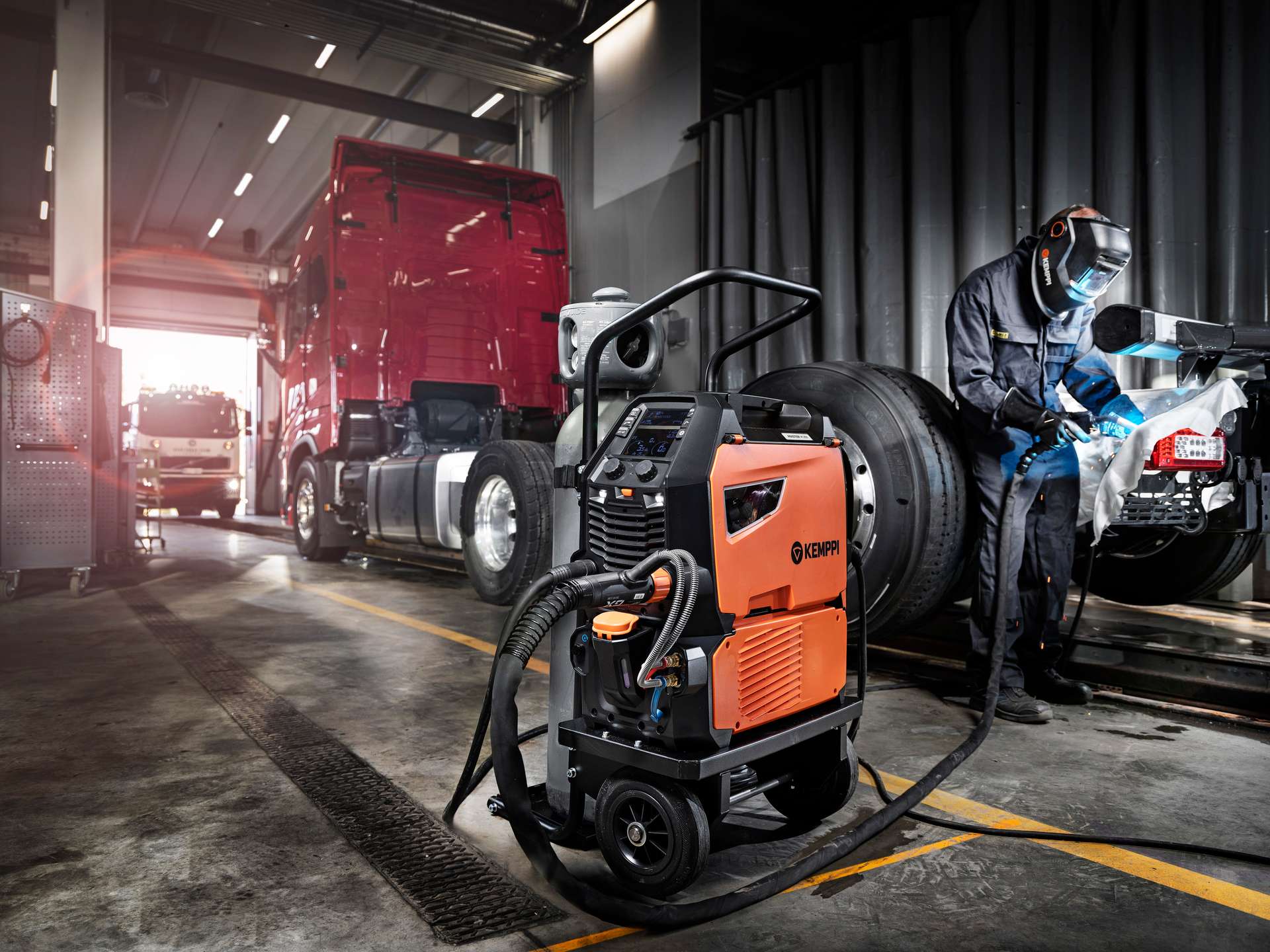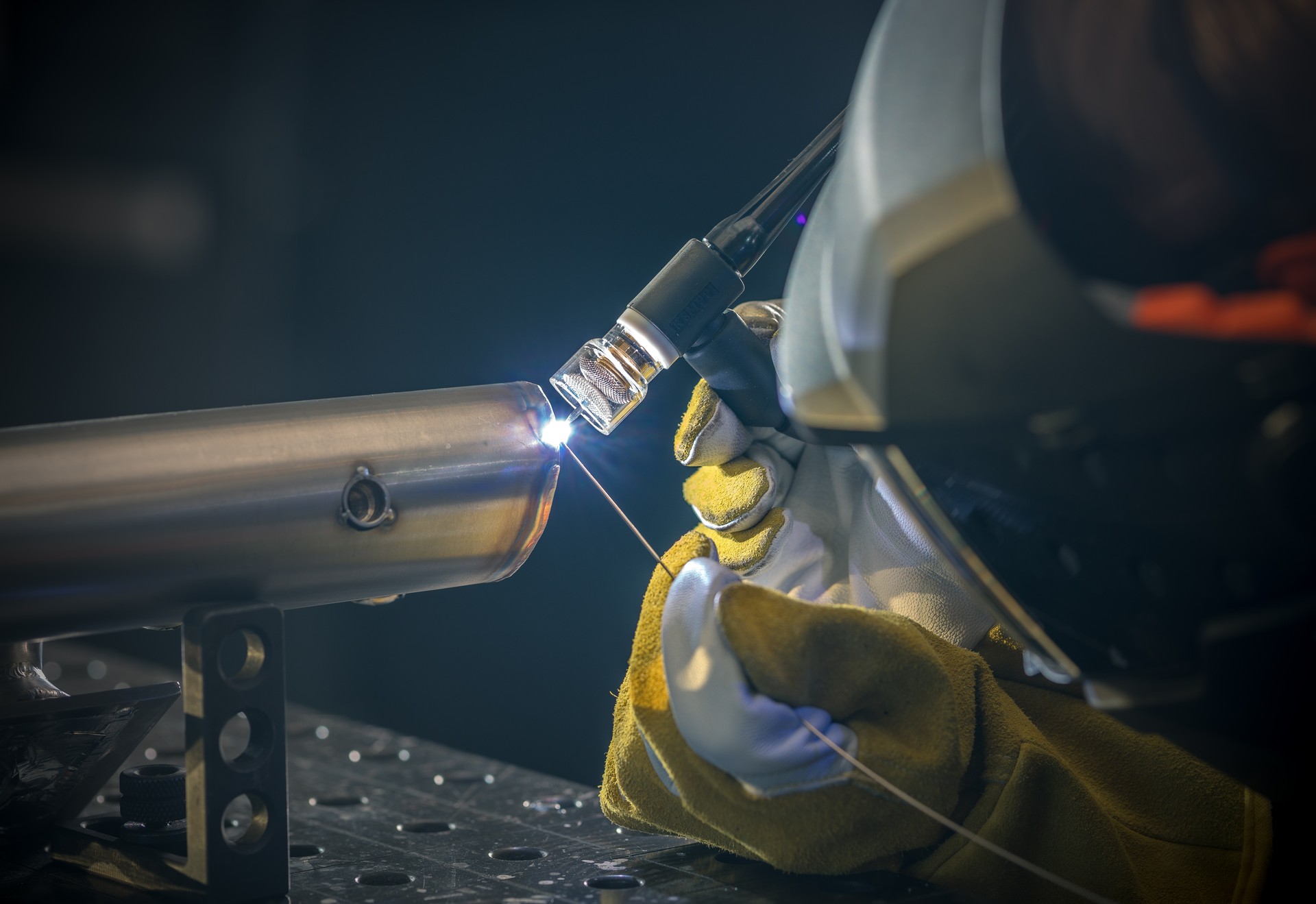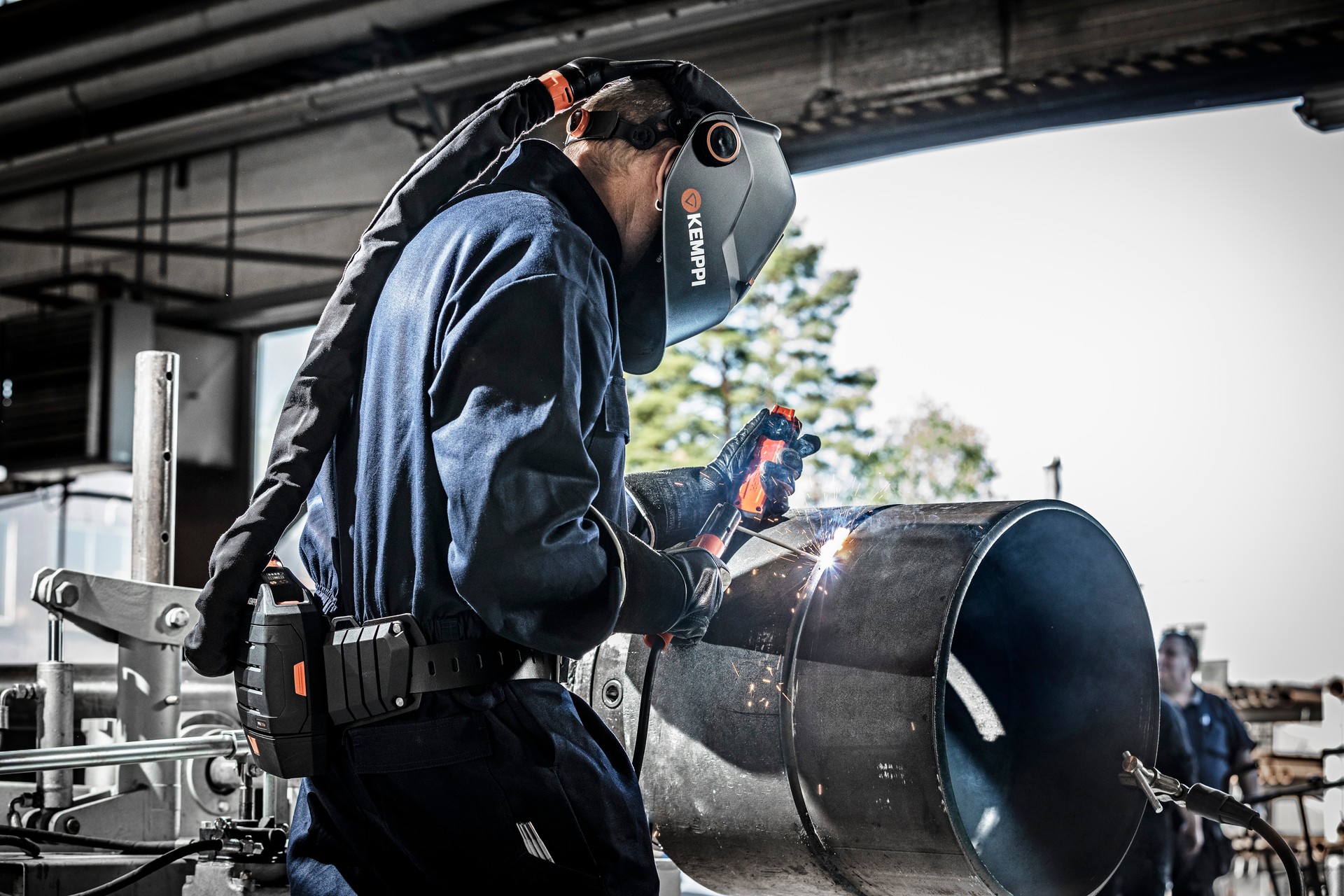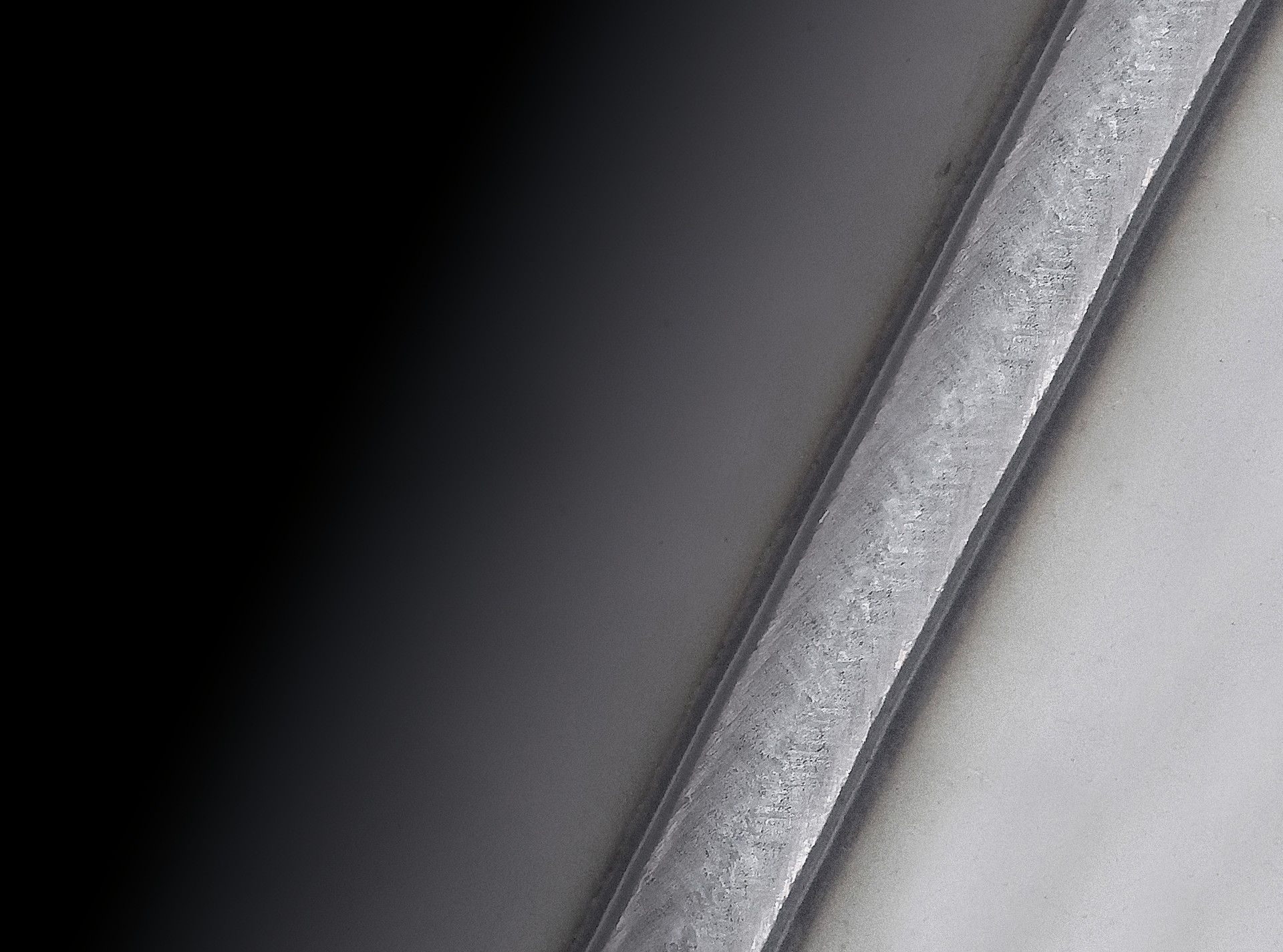
ABC della saldatura
Cosa si intende per saldatura?
31 dicembre 2023
Descrizione della tecnologia di saldatura
Welding Value
PROCESSO DI SALDATURA DESCRITTO NEL DETTAGLIO
Per saldatura si intende l'unione o la fusione di pezzi utilizzando il calore e/ o la compressione in modo che i pezzi formino un continuum. La fonte di calore nella saldatura è solitamente una fiamma ad arco prodotta dall'elettricità del generatore di saldatura. La saldatura basata sull'arco è chiamata saldatura ad arco.
La fusione dei pezzi può avvenire esclusivamente in base al calore prodotto dall'arco in modo che i pezzi di saldatura si fondano insieme. Questo metodo può essere utilizzato, ad esempio, nella saldatura TIG.
Tuttavia, un metallo di riempimento viene generalmente fuso nella giunzione di saldatura, o saldato, utilizzando un trainafilo tramite la torcia di saldatura (saldatura MIG/MAG) o utilizzando un elettrodo di saldatura ad alimentazione manuale. In questo scenario, il metallo di riempimento deve avere approssimativamente lo stesso punto di fusione del materiale saldato.
Prima di iniziare con la saldatura, i bordi dei pezzi di saldatura vengono modellati in una scanalatura di saldatura adatta, ad esempio, una scanalatura a V. Man mano che la saldatura procede, l'arco fonde insieme i bordi della scanalatura e del materiale di riempimento, creando un bagno di saldatura fuso.
Affinché la saldatura duri a lungo, il bagno fuso deve essere protetto dall'ossigenazione e dagli effetti dell'aria circostante, ad esempio, con gas di protezione o scorie. Il gas di protezione viene immesso nel bagno di saldatura fuso con la torcia di saldatura. L'elettrodo di saldatura è anche rivestito con un materiale che produce gas di protezione e scorie sul bagno di saldatura fuso.
I materiali più comunemente saldati sono metalli, come alluminio, acciaio dolce e acciaio inossidabile. Anche la plastica può essere saldata. Nella saldatura della plastica, la fonte di calore è l'aria calda o una resistenza elettrica.
ARCO DI SALDATURA
L'arco di saldatura necessario nella saldatura è una scarica elettrica tra l'elettrodo di saldatura e il pezzo di saldatura. L'arco viene generato quando viene generato un impulso di tensione sufficientemente grande tra i pezzi. Nella saldatura TIG, ciò può essere ottenuto mediante l'accensione del grilletto o quando il materiale saldato viene colpito dall'elettrodo di saldatura (innesco).
Pertanto, la tensione viene scaricata come un fulmine permettendo all'elettricità di fluire attraverso il traferro, creando un arco con una temperatura di diverse migliaia di gradi centigradi, fino a un massimo di 10.000 °C (18.000 gradi Fahrenheit). Una corrente continua dal generatore di saldatura al pezzo da lavorare viene stabilita attraverso l'elettrodo di saldatura. Quindi, il pezzo da lavorare deve essere messo a terra con un apposito cavo nella saldatrice prima di iniziare la saldatura.
Nella saldatura MIG/MAG, l'arco si instaura quando il materiale di riempimento tocca la superficie del pezzo e si genera un cortocircuito. Quindi, una corrente di cortocircuito efficiente fonde l'estremità del filo di riempimento e viene stabilito un arco di saldatura. Per una saldatura senza problemi e duratura, l'arco di saldatura deve essere stabile. Pertanto, nella saldatura MIG/MAG è importante utilizzare una tensione di saldatura e una velocità di avanzamento del filo adeguate ai materiali di saldatura e ai loro spessori.
Inoltre, la tecnica di lavoro del saldatore influisce sulla scorrevolezza dell'arco e, di conseguenza, sulla qualità della saldatura. La distanza dell'elettrodo di saldatura dalla scanalatura e la velocità costante della torcia di saldatura sono importanti per una saldatura di successo. La valutazione della corretta tensione e velocità di avanzamento del filo è una parte importante delle competenze del saldatore.
Le moderne saldatrici, tuttavia, hanno diverse caratteristiche che facilitano il lavoro del saldatore, come il salvataggio delle impostazioni di saldatura utilizzate in precedenza o l'utilizzo di curve di sinergia preimpostate, che facilitano l'impostazione dei parametri di saldatura per l'attività da svolgere.
GAS DI PROTEZIONE NELLA SALDATURA
Il gas di protezione gioca spesso un ruolo importante nella produttività e nella qualità della saldatura. Come suggerisce il nome, il gas di protezione protegge la saldatura fusa durante la solidificazione dall'ossigenazione, nonché dalle impurità e dall'umidità nell'aria, che possono indebolire la tolleranza alla corrosione della saldatura, generare risultati porosi e ridurre la durata della saldatura modificando le caratteristiche geometriche del giunto. Il gas di protezione raffredda anche la torcia di saldatura. I componenti del gas di protezione più comuni sono argon, elio, anidride carbonica e ossigeno.
Il gas di protezione può essere inerte o attivo. Un gas inerte non reagisce affatto con la saldatura fusa, mentre un gas attivo partecipa al processo di saldatura stabilizzando l'arco e assicurando il trasferimento regolare del materiale alla saldatura. Il gas inerte viene utilizzato nella saldatura MIG (saldatura a gas inerte ad arco metallico) mentre il gas attivo viene utilizzato nella saldatura MAG (saldatura a gas attivo e arco metallico).
Un esempio di gas inerte è l'argon, che non reagisce con la saldatura fusa. È il gas di protezione più comunemente utilizzato nella saldatura TIG. L'anidride carbonica e l'ossigeno, tuttavia, reagiscono con la saldatura fusa. Lo stesso vale per una miscela di anidride carbonica e argon.
Anche l'elio (He) è anche un gas di protezione inerte. Le miscele di elio e elio-argon sono utilizzate nella saldatura TIG e MIG. L'elio fornisce una migliore penetrazione laterale e una maggiore velocità di saldatura rispetto all'argon.
L'anidride carbonica (CO2) e l'ossigeno (O2) sono gas attivi utilizzati come componente ossigenante per stabilizzare l'arco e garantire una trasmissione regolare del materiale nella saldatura MAG. La proporzione di questi componenti nel gas di protezione è determinata dal tipo di acciaio.
NORME E STANDARD NELLA SALDATURA
Diversi standard e varie norme internazionali si applicano ai processi di saldatura, nonché alla struttura e alle caratteristiche delle saldatrici e delle forniture. Contengono definizioni, istruzioni e limitazioni per le procedure e le strutture delle macchine per aumentare la sicurezza dei processi e delle macchine e per garantire la qualità dei prodotti.
Ad esempio, lo standard generale per le saldatrici ad arco è IEC 60974-1, mentre i termini tecnici di consegna e le forme, le dimensioni, le tolleranze e le etichette dei prodotti sono contenuti nello standard SFS-EN 759.
SICUREZZA NEGLI AMBIENTI DI SALDATURA
Esistono diversi fattori di rischio legati alla saldatura. L'arco emette una luce estremamente forte e radiazioni ultraviolette, che possono danneggiare gli occhi. Spruzzi di metallo fuso e scintille possono bruciare la pelle e causare un rischio di incendio. Inoltre, i fumi generati dalla saldatura possono essere pericolosi se inalati.
Questi pericoli possono essere evitati, tuttavia, preparandosi adeguatamente e utilizzando i dispositivi di protezione appropriati.
La protezione contro i rischi di incendio può essere ottenuta controllando in anticipo l'ambiente del sito di saldatura e rimuovendo i materiali infiammabili che si trovano vicino al sito. Inoltre, gli estintori devono essere prontamente disponibili. Agli estranei non è consentito entrare nella zona di pericolo.
Gli occhi, le orecchie e la pelle devono essere protetti con i dispositivi di protezione appropriati. Una maschera per saldatura con schermo oscurato protegge gli occhi, i capelli e le orecchie. Guanti per saldatura in pelle e un abbigliamento per saldatura resistente e non infiammabile proteggono le braccia e il corpo da scintille e calore.
I fumi di saldatura possono essere evitati con una ventilazione sufficiente nel luogo di lavoro.
Maggiori informazioni sulla sicurezza della saldatura
METODI DI SALDATURA
I metodi di saldatura possono essere classificati in base al metodo utilizzato nella produzione del calore di saldatura e al modo in cui il materiale di riempimento viene alimentato nella saldatura. Il metodo di saldatura utilizzato viene selezionato in base ai materiali da saldare e allo spessore del materiale, all'efficienza di produzione necessaria e alla qualità visiva desiderata della saldatura.
I metodi di saldatura più comunemente usati sono la saldatura MIG/MAG, la saldatura TIG e la saldatura a elettrodo (arco metallico manuale). Il processo più antico, più noto e ancora abbastanza comune è la saldatura manuale ad arco metallico MMA, che viene comunemente utilizzata nei siti di installazione e nei siti all'aperto che richiedono una buona accessibilità.
Il metodo di saldatura TIG più lento consente di produrre risultati di saldatura di ottima qualità e, pertanto, viene utilizzato in saldature a vista o in saldature che richiedono una precisione particolare.
La saldatura MIG/MAG è un metodo di saldatura versatile, in cui il materiale di riempimento non deve essere alimentato separatamente nella saldatura fusa. Invece, il filo scorre attraverso la torcia di saldatura circondato dal gas di protezione direttamente nella saldatura fusa.
Ci sono anche altri metodi di saldatura adatti per esigenze speciali, come la puntatura e la saldatura laser, al plasma, ad arco sommerso, a ultrasuoni e per attrito.

Welding Value
Welding Value
Welding Value is a corporate blog hosted by Kemppi Oy. Its main purpose is to evoke discussion on the transformation of modern welding, and bring you the latest stories from within the global welding industry told by true experts in their respective fields.






